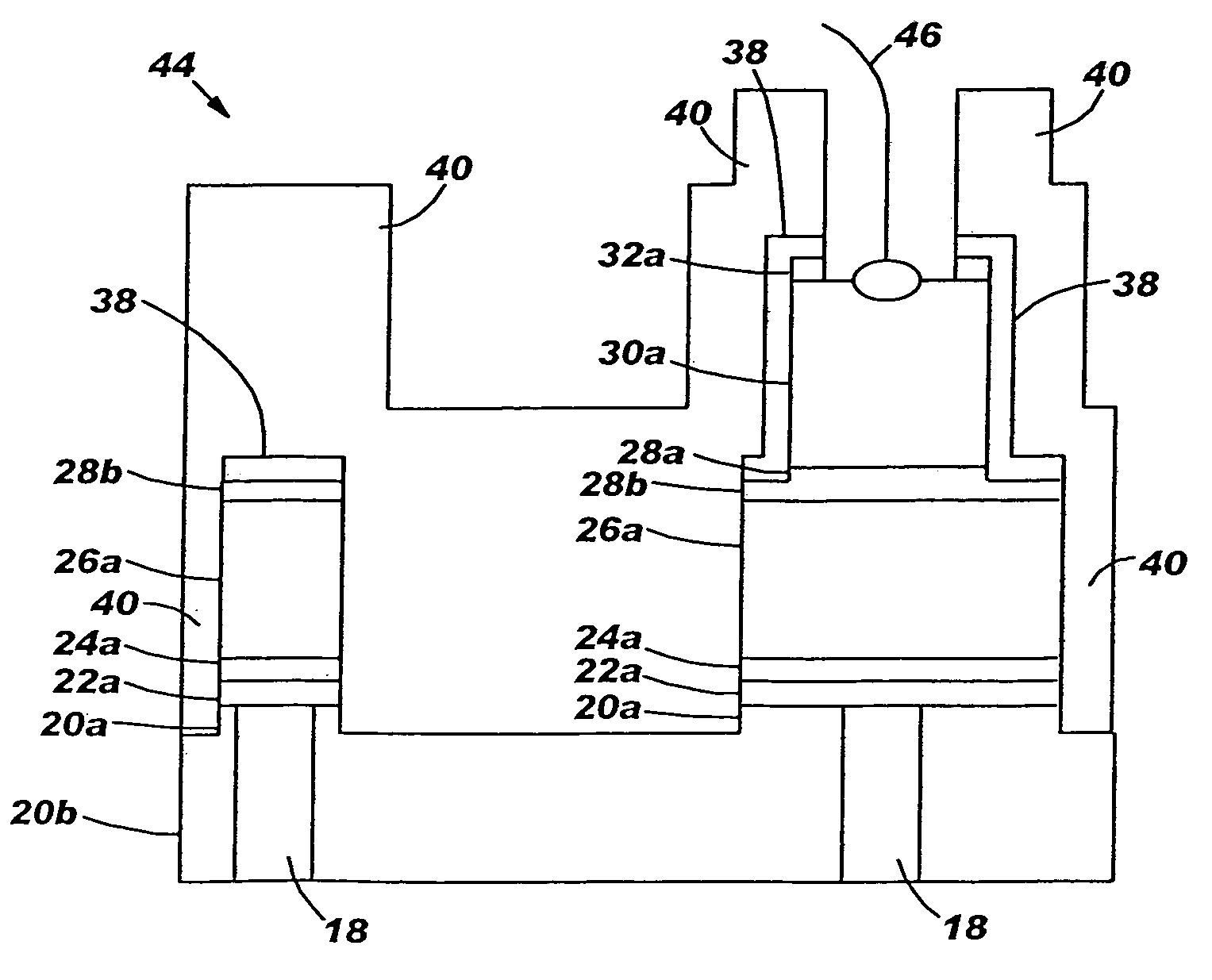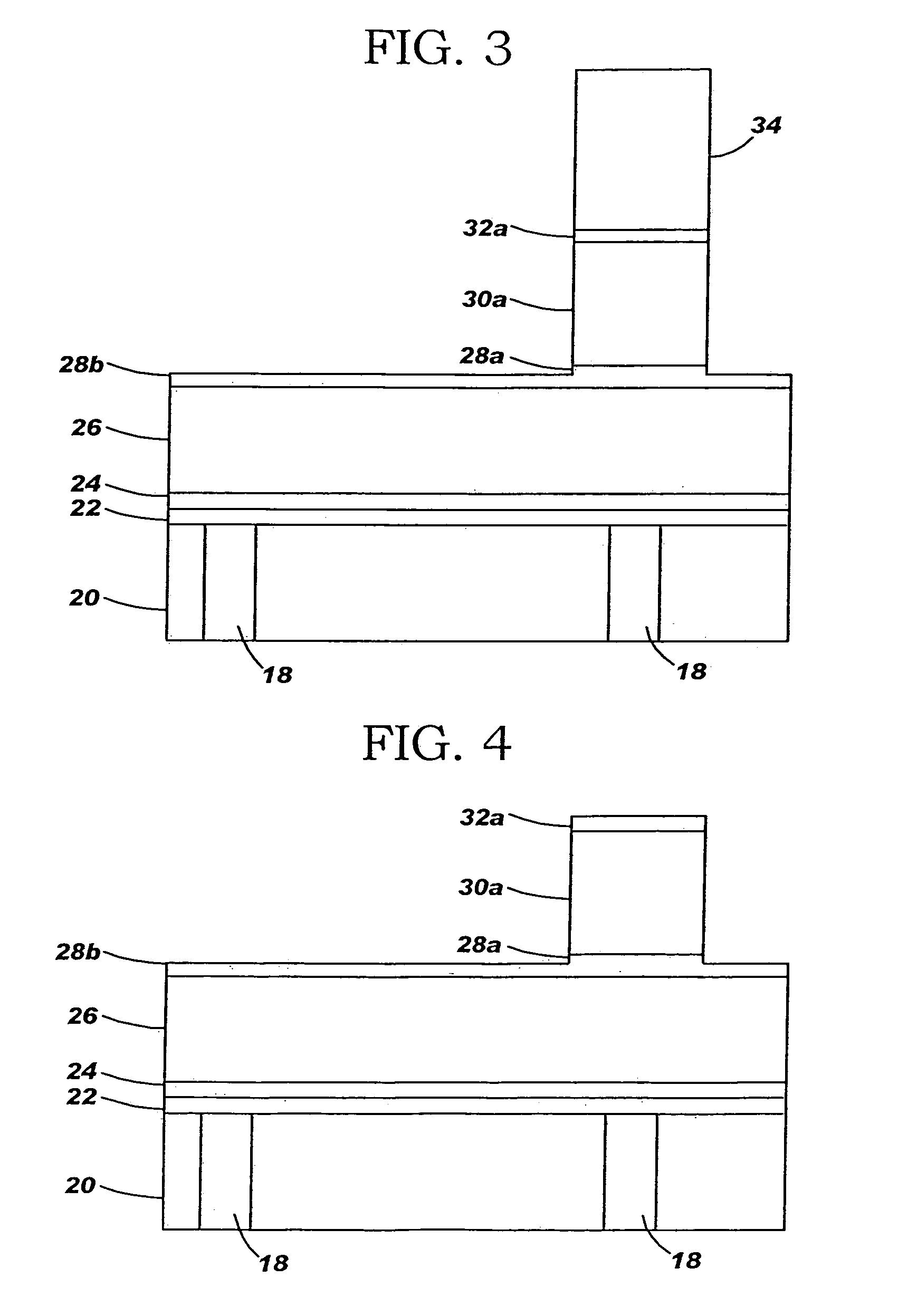Bilayer aluminum last metal for interconnects and wirebond pads
a wirebond pad and aluminum technology, applied in the direction of semiconductor devices, semiconductor/solid-state device details, electrical apparatus, etc., can solve the problems of unsatisfactory, unsatisfactory, and difficult reduction of wirebond ball size from 70 m to 50 m, and increase the thickness of the last wire bonding level to approximately 1 m
- Summary
- Abstract
- Description
- Claims
- Application Information
AI Technical Summary
Benefits of technology
Problems solved by technology
Method used
Image
Examples
Embodiment Construction
)
[0027]In describing the preferred embodiment of the present invention, reference will be made herein to FIGS. 1–12 of the drawings in which like numerals refer to like features of the invention.
[0028]Instead of i) adding additional wiring levels only for the wirebond and / or ii) creating an unacceptable high thickness of the last aluminum copper wiring level, the present invention provides a dual thickness last wiring level with on-pitch wires, e.g. wires approximately 500 nm high, and wirebond pads of approximately greater than twice the height, e.g., approximately 1 μm or thicker. The present invention may be used to fabricate dual height wiring of any desired thickness for any purpose.
[0029]As shown in FIG. 1, the double layer metal stack comprises an underlying substrate layer 20, a titanium layer 22, here shown as being approximately 25 nm thick, and superimposed thereover a titanium nitride (TiN) layer 24, also shown as approximately 25 nm thick. The materials used for layers ...
PUM
 Login to View More
Login to View More Abstract
Description
Claims
Application Information
 Login to View More
Login to View More - R&D
- Intellectual Property
- Life Sciences
- Materials
- Tech Scout
- Unparalleled Data Quality
- Higher Quality Content
- 60% Fewer Hallucinations
Browse by: Latest US Patents, China's latest patents, Technical Efficacy Thesaurus, Application Domain, Technology Topic, Popular Technical Reports.
© 2025 PatSnap. All rights reserved.Legal|Privacy policy|Modern Slavery Act Transparency Statement|Sitemap|About US| Contact US: help@patsnap.com



